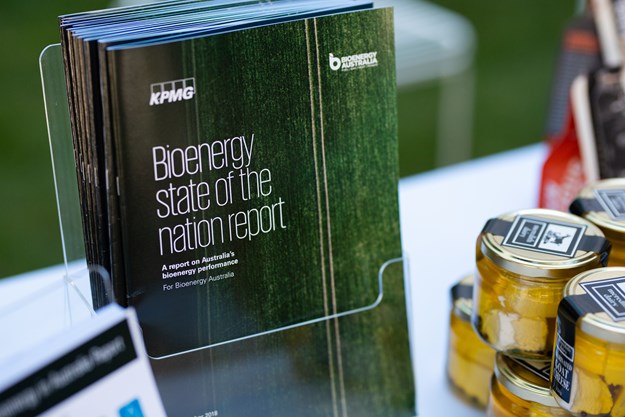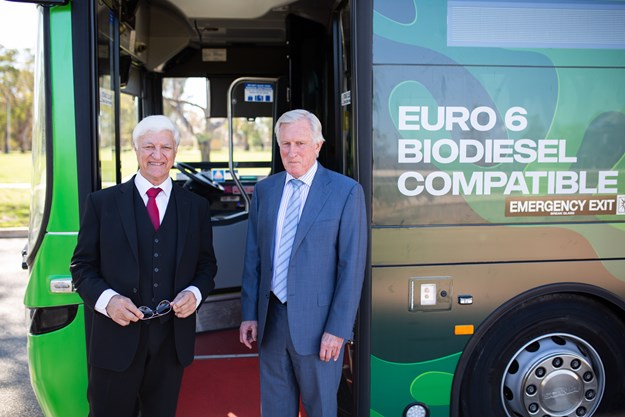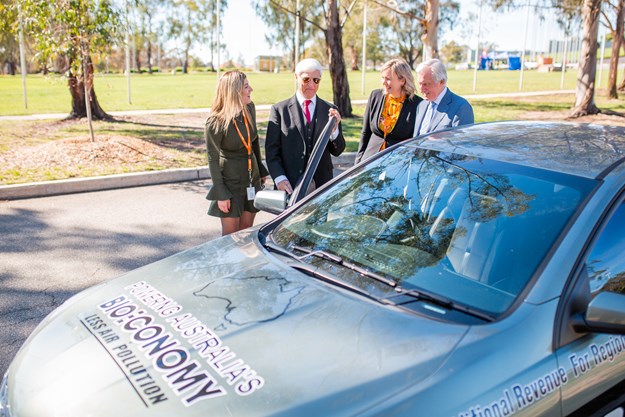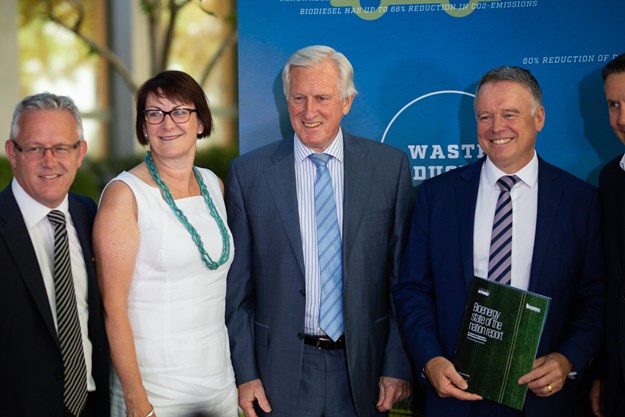BREAKING: A NATIONAL billion-dollar bioenergy industry continues to be ignored and calls for leadership on the issue have been made, following the release of crucial report today in Canberra.
A collaborative effort between Bioenergy Australia and KPMG, the State of the Nation Report is the first national assessment of its kind that identifies Australia’s significant bioenergy opportunity and provides a criteria for kick-starting Australia’s bioenergy economy, it states.
The new report shows Queensland is the national leader while Australia lags behind globally with no national strategy.
The opportunity for Australia is significant and multi-faceted, offering a AUD$3.5-$5 billion investment opportunity, mostly in regional economies, which the Australian government is being urged to address.
Bioenergy Australia CEO Shahana McKenzie said, “The report reviews the policies of states and territories in order to share learning and facilitate policy transfer across Australia, with much to be gained through adoption of ‘best practice’ approaches throughout Australia.”
“For example, Queensland has adopted a number of successful policies which can be adapted and deployed to drive bioenergy uptake across the country,” she explained.
WHAT IS IT?
Bioenergy is generated from the conversion of solid and liquid biomass products for use as electricity, heat, gas, liquid fuels and bio-based products and delivers a range of benefits such as employment and economic development of rural/agricultural communities, energy security, utilisation of waste streams and reduction in greenhouse gas emissions.
Shadow Minister for Climate and Energy, the Hon Mark Butler MP, at the launch said: “There are huge opportunities for Australia to embrace bioenergy. I welcome this important report from KPMG and look forward to working with Bioenergy Australia in this exciting transition.”
McKenzie said, “Overall, what differentiates Queensland as the clear leader is they have identified bioenergy as a huge opportunity for their state and have developed a vision to capitalise on it.”
“In addition, their policy objectives are better defined and more aligned to the bioenergy sector compared to other states and territories, with strong evidence of advocacy of the benefits and opportunities from bioenergy.”
NATIONAL POLICY NEEDED
While the Federal Government has implemented mechanisms to reduce carbon emissions, such as the Renewable Energy Target and Emissions Reduction Fund, a national vision, policy objectives and/or policy levers would unlock Australia’s bio-economy, organisers state.
This report indicates, from a local and global level, these factors are critical to the development of a bio-economy, with the potential to positively impact big issues for Australia such as emissions, utilisation of waste streams and regional growth.
STATE AND TERRITORY OVERVIEW
Report assessments were based on bioenergy performance measured against five evaluation criteria: policy development and effectiveness, bioenergy project development, technology and feedstock, sustainability guidance, advocacy and education.
The majority of the 179 commissioned bioenergy projects are in Queensland, NSW and Victoria (77 per cent) and the main technologies comprise combustion** (56 per cent) and anaerobic digestion (29 per cent).
All states are lacking diversification across feedstock and technology, and most projects produce electricity as an output, which a national vision could transform, it states.
“Queensland is driving the bioenergy agenda on a number of fronts, and should be commended for the incredible work happening across the state. They have a government who recognises bioenergy as a priority industry, actively rolling out new projects through the delivery of the Biofutures Roadmap and Biofutures Program,” said McKenzie.
GLOBAL SNAPSHOT
The report found Australia in the bottom quartile for bioenergy contribution globally, lagging behind other Organisation for Economic Co-operation and Development (OECD) countries placing 20 out of 24 reviewed.
McKenzie explains there were a host of global initiatives identified to inspire Australia in the report; from committed targets for renewables, to investment support and renewable heat incentives.
The report noted Sweden has a landfill ban for organic waste and the US [has] loan guarantees for the establishment of bio-refineries.
“The global disparity in contribution we see is concerning, particularly with the ambitious targets set for emissions reduction by the marine and aviation industries. There are massive changes ahead to the fuel mix globally and we sit well behind at four per cent of total energy consumption for biomass energy or fuel purposes versus the EU’s 10 per cent.”
“There is a new industry waiting to be developed for bio-chemicals which can replace the need for fossil-fuel based derivatives entirely. If we don’t seize this opportunity we will be left behind and end up importing what could be made locally, with significant economic and environmental impacts,” said McKenzie.
RENEWABLE IMPACT
A recently released market analysis and forecast report by the International Energy Agency predicted modern bioenergy will, over the next five years, have the biggest increase in renewable energy consumption, driving 30 per cent of global renewable energy consumption growth.
McKenzie explains that as with any emerging sector government support plays an important role in removing barriers and accelerating the development of new projects.
“There is no shortage of viable options we can implement to drive us forward, and we hope the Bioenergy Australia State of the Nation report can be this force for change in the sector so Australia can leverage the wide-ranging potential benefits of a bio-economy before it’s too late,” he said.
For a full copy of the report go to bioenergyaustralia.org.au
ABOUT BIOENERGY AUST.
Bioenergy Australia is committed to accelerating Australia’s bio-economy, it states. Its mission is to foster the bioenergy sector to generate jobs, secure investment, maximise the value of local resources, minimise waste and environmental impact, and develop and promote national bioenergy expertise into international markets. Australia lags behind the world when it comes to bioenergy, and it aims to change that, it states.
It empowers, shares knowledge, and connects Australian bioenergy producers, investors, researchers and users to make Australia’s bio-economy world-class, it’s claimed.
THE REPORT
KPMG used data on Australian bioenergy projects provided by Bioenergy Australia to undertake the evaluation of 222 operating bioenergy plants and an additional 55 projects are either under construction or within the feasibility stage of development.
The purpose of the report is to:
– provide an overview of bioenergy and its benefits to the Australian economy;
– develop criteria to assess the bioenergy performance of each state and territory; and
– undertake an evaluation and prepare a scorecard of performance for each state and territory.
The report will assist Australian governments and industry stakeholders to build an understanding of gaps in the development of the bioenergy sector, it states. The report is designed to provide an accessible introduction to biomass and bioenergy, including a high-level assessment of the performance of the states and territories based on desktop research and data provided by Bioenergy Australia. Bioenergy is a multifaceted sector and this report is not a comprehensive overview of feedstock type and availability, conversion technologies or end-uses. It also does not provide specific policy recommendations on developing the bioenergy sector.
A CLOSER LOOK – BIOENERGY
Bioenergy is generated from the conversion of solid and liquid biomass products for use as ‘dispatchable electricity’, heat, gas, liquid fuels and bio-based products.
The benefits of bioenergy are multi-faceted and cover the following four key areas:
– Enhanced energy security through domestic production of biofuels and diversification of electricity and heat fuel sources;
– Greater utilisation of waste streams through higher recycling and reuse of waste from agricultural, industrial, commercial and domestic activities;
– Regional employment, investment and economic development as the feedstock used for bioenergy often stems from rural and agricultural activities, through new or existing manufacturing processes;
– Reduction in greenhouse gas emissions as sustainably sourced biomass is carbon neutral
** Combustion technology is the main technology used to produce bioenergy




.png)





